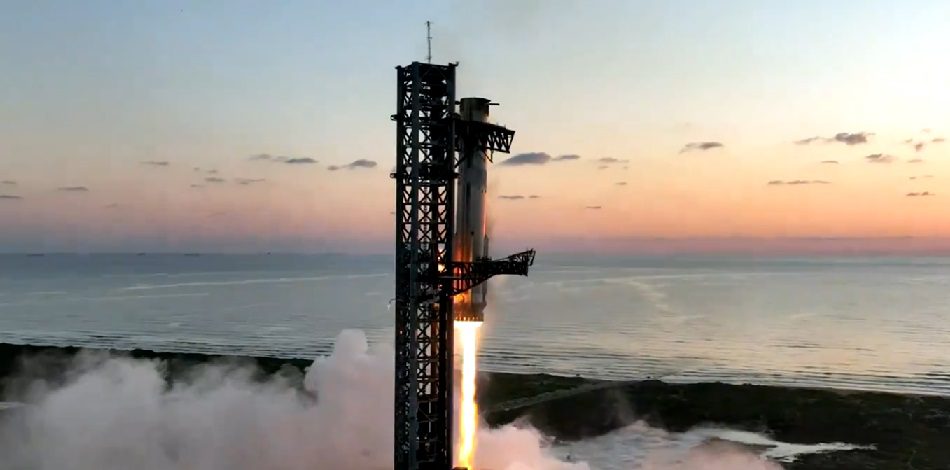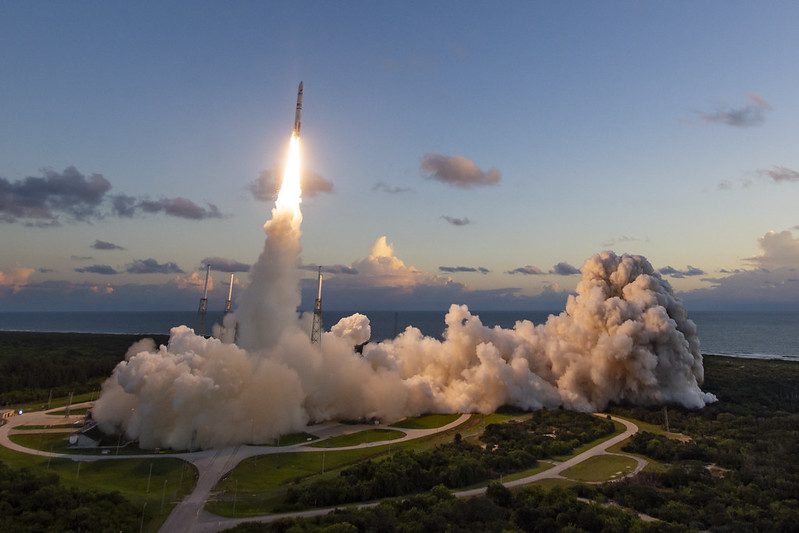credit NASA / caption: will it ever be crewed?
Flightglobal recently interviewed Space Shuttle Programme manager John Shannon about the Heavy Lift Vehicle (HLV). He gave a presentation about it to the Review of US human spaceflight plans commitee on 17 June. The Flightglobal article about HLV can be found here and also below and in the extended portion of this blog post are the notes from that interview that have information excluded from the article – due to reasons of word count limits for the web site’s sister print title Flight International
The Shuttle-C separated from the External Tank (ET), the HLV doesn’t. Industry looked at side mount for two years, 2004, 2005
A deployable fairing was added by the SSP HLV team, which added payload capability
Learnt from SSME about life cycle costs. “Reusability is a myth in my opinion” because of the parts that have to be replaced and associated costs with keeping the supply chain in place to keep the engines maintained
The cargo carrier boat tail is permanently attached to the ET while the avionics are at the front of it
I wish we had done Shuttle-C in 1980s and 1990s we could have tested upgrades, developments that could then be rolled into the Shuttle-Orbiter stack
The HLV block one will use existing Shuttle flight software, but would not use the full suite used on the Orbiter
The aerodynamics between the ET and the orbiter are complex, acoustic models, structural models, loads, trajectory models need to be done for the cargo carrier and crewed version
If you used a cargo carrier that has the same or similar mould line as shuttle stack has now you already have that history/data
Block two for HLV is necessary because we will run out of shuttle hardware
A big plus for the HLV is no new infrastructure, no new ET barge for example
Early assessment on crew version launch abort system (LAS) being close to the ET says that it “looks doable”
Primary area of HLV study, having a crewed version it all depends on how effective we can make the LAS work
We need more study to ensure any escape system can get out of the proximity of a rocket if it is out of control. I am not real worried about [ET/cargo carrier] shock interaction, affecting the abort system
Have studied different flows and load paths on feed lines and protuberances and we have to do detailed dynamic work to make sure we don’t affect the ET [with addition of cargo carrier]
“Its very complicated aerodynamics between the orbiter and external tank, it would be very complicated aerodynamics between the cargo carrier and tank and with the crew version you have another pointy piece sticking above the stack”
I have no doubts we could design an escape system to get away from the tank. You’d have a thrust component that is not straight up, one that carries you away from the tank but we do that with [solid rocket] booster separation
Would you have zero altitude capability, on the pad, could you could you boost up [with the LAS] and yes [we found] you could. You’d be only 30ft lower than you would be on the Ares I [crew launch vehicle]
We would look at both of them – baseline Orion LAS and the Max Launch Abort System and maybe something completely different
Notional architecture for HLV lunar mission is two launches, one for Orion, one for a lander, each with their own Earth departure stage (EDS) with lunar orbit rendezvous
Instead of two EDS I would put lunar lander in lunar orbit and with hypergols you can send the Orion whenever you want
In my opinion the Orion development would be the pacing item for the new crewed HLV
We have everything to build the HLV except the cargo carrier structural parts, its keel, deployable fairing and boat tail to mount up the engines. For development you would focus on the structural pieces – because you are reusing the likes of Orbiter avionics and flight software
HLV retains the contractor and civil servant skill base we have right now, especially if Shuttle flights are spread out, I am very concerned about the industrial base
By spreading out the remaining Shuttle flights to 2012 we can reduce the impact of the transition and make the gap smaller. HLV is the least expensive most evolutionary option as opposed to a new design
[A five segment solid rocket booster used on the side mount design] would be a much different configuration. You’d need different contact points on the solid rocket boosters as it would sit up higher. Connections on both sides would be lower down you would have to alter them, its a completely different configuration
Our number one favourite option is to build Ares I and V but right now there is no money to do that. If the money is not there, the money is not there
There is a NASA technical team and an aerospace independent technical team. We have shared all previous analysis and data we added on what we thought was new, feature such as the fairing jettison with the sub-orbital main engine cut off
[The technical teams] have gone off to do a first order technical assessment on cost and schedule and performance and then it is very simply looking at that performance, is there an architecture you could have that would be sustainable that we cuold do with our current budget
DIRECT is a viable rocket but the cost is high also. I think they have underestimate their costs





